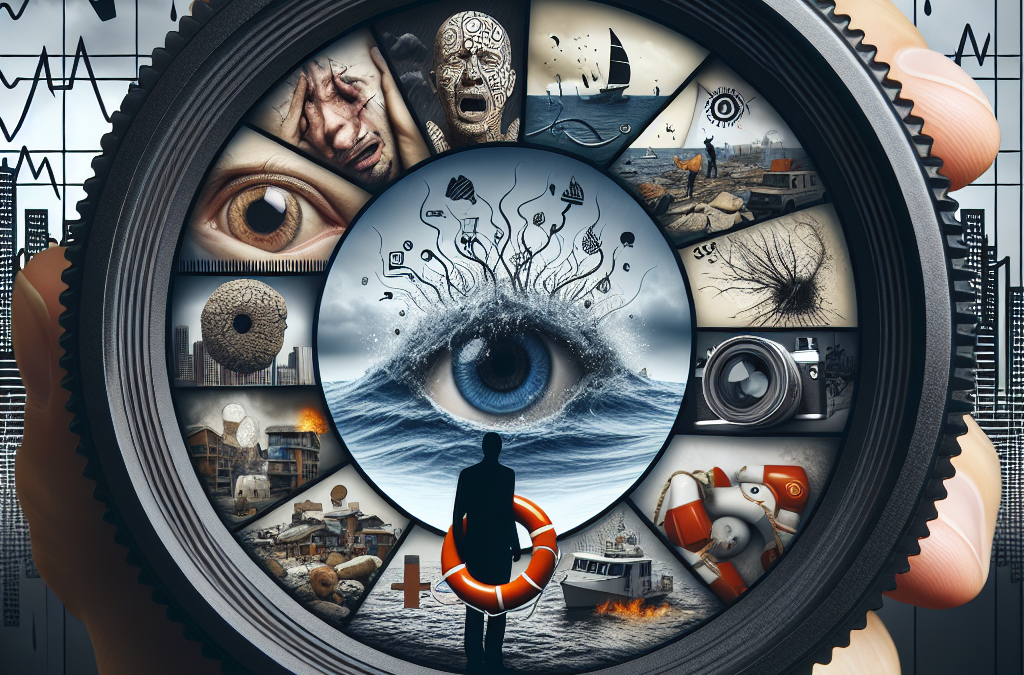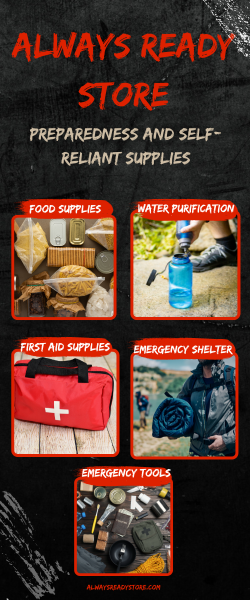Disasters can shake us to our core in ways we never thought possible. Whether it’s natural disasters like hurricanes and earthquakes or man-made tragedies, the psychological toll is real. Having navigated my own fair share of emotional upheavals, I can tell you, it’s crucial to categorize our feelings and reactions. Let’s dive into how disasters can affect our mental state and more importantly, how we can learn to cope.
Understanding the Emotional Reactions to Disasters
Common Emotional Responses
Right after a disaster hits, it’s normal to feel a whirlwind of emotions. You might feel fear, sadness, anger, or even numbness. Every person reacts differently to trauma, and acknowledging your feelings is the first step. Once, after a significant event, I found myself oscillating between extreme sadness and a feeling of complete detachment from reality. I realized that these reactions, though unsettling, are part of the healing process.
Understanding that these feelings are common can be liberating. Whether it’s grief from loss or anxiety about future uncertainties, naming these emotions can help in processing them. I often recommend journaling to my friends post-disaster. Writing what you feel, even if it seems jumbled, creates a pathway to healing.
Also, don’t be surprised if these emotions linger longer than you’d expect. Many times, the psychological impact of disasters doesn’t vanish quickly; it morphs over time. Giving yourself permission to feel is key, and it’s perfectly okay to seek out support when needed.
Adjustment Difficulties
After experiencing a disaster, adjusting back to ‘normal’ life can be one of the toughest challenges. You might find reminders of the event trigger anxiety or distress. When I was attempting to resume my routine after a natural disaster, I faced difficulties concentrating on mundane tasks. Everything seemed tinged with worry.
Finding healthy coping mechanisms is vital. For me, joining a support group was a game-changer. Talking to others who had gone through similar experiences helped me realize that I wasn’t alone. Sometimes sharing your story helps weave a narrative that makes life seem less chaotic.
Thank you for reading this post, don't forget to subscribe NOW for FREE!
Routine is your ally too. Gradually re-establishing a sense of normalcy can offer comfort. In the aftermath of my own experiences, I focused on small daily tasks—like walking my dog or cooking dinner—as a way to anchor myself amid the chaos.
Physical Symptoms Related to Stress
It’s essential to realize that emotional turmoil can manifest physically. Stress from disasters can lead to symptoms like headaches, stomach issues, or fatigue. I learned this lesson during a particularly stressful time. My body literally started sending me red flags, and I knew I needed to listen.
When your mind is in distress, the body often reflects that turmoil. Acknowledging physical symptoms and treating them gently is so important. Techniques like deep breathing, meditation, or light exercise helped me. I even took up yoga, finding that it not only calmed my mind but also eased physical tension.
Remember, your body is battling too! Make sure to prioritize self-care. Whether that’s indulging in a hobby you love, or simply taking a warm bath, nurturing yourself can go a long way in helping you recover holistically.
Identifying and Addressing Trauma Symptoms
Recognizing Trauma Signs
Trauma can be sneaky. Sometimes, the signs don’t show up until weeks or even months later. For me, I noticed I was becoming easily agitated, and certain sounds or images from the disaster would send me spiraling. Recognizing these signs is crucial; it’s the first step toward finding help.
Symptoms can range from intrusive thoughts about the event, hypervigilance, or even avoiding places or reminders that trigger distress. I once avoided a park where I had experienced a traumatic event. Understanding that avoidance often stems from fear made it easier for me to confront my feelings.
It’s key to approach trauma with patience. Each person’s healing timeline is unique. Acceptance of where you are is essential for moving forward without fear or shame about your recovery journey.
Seeking Professional Help
Let’s face it—often we need a little extra help, and that’s totally okay! Talking to a professional can provide tailored guidance and coping strategies. I remember feeling apprehensive about seeking therapy after my experiences, but it turned out to be a blessing in disguise.
Finding someone you trust is essential. Whether through personal recommendations or online directories, look for someone who specializes in trauma care. Therapy gave me tools to manage my anxiety and helped me explore my feelings constructively.
Don’t hesitate to reach out! Seeking help is a sign of strength, not weakness. It’s okay to lean on experts who can provide a safe space for you to explore your feelings—trust me, it can transform your healing journey.
Building a Support Network
Connecting with family, friends, or community members can shore you up during tough times. After experiencing disaster, isolation can sneak in, but I’ve found that sharing the weight of that burden makes a world of difference. Organizing meet-ups or joining community support groups can strengthen your network.
Never underestimate the power of a listening ear. I often invite friends over just to hang out, allowing a casual environment to talk about life, feelings, or just to enjoy a good movie together. It’s comforting to know you’re not alone in the aftermath.
Remember that it isn’t just about talking; giving support to others can be equally healing. Sometimes, being there for someone else helps us process our own experiences. Strength breeds strength, and community can be a powerful part of our healing process.
Developing Coping Strategies and Skills
Healthy Coping Mechanisms
Creating a toolkit of coping strategies can help you navigate post-disaster life. I’ve learned to combat my anxiety through various methods—some are physical, while others are creative or contemplative. For instance, simple things like going for a run or engaging in art have proven therapeutic for me.
It’s all about discovering what works for you. Experiment with tools like mindfulness, journaling, or even gardening. When I tend to my plants, I find peace in the rhythm of watering and caring for them. That connection to nature brings grounding to the chaos within.
Your toolkit should be unique to you! Whether you enjoy cooking, running, painting, or meditating, prioritize activities that bring you joy and calmness. Having these coping strategies in place can arm you when stress strikes.
Building Resilience
Resilience isn’t about being tough but rather about adapting, learning, and bouncing back from adversity. I’ve found that every disaster has taught me something valuable about myself. It’s about reframing your mindset and embracing the idea that you can overcome challenges.
Start by setting small goals for yourself. After a disaster, I focused on tiny achievements—like getting out of bed on time or having a healthy meal. Celebrating those little wins can build confidence and encourage you to tackle bigger challenges ahead.
Building resilience often includes fostering optimism. Surrounding myself with positive and supportive people has helped craft an uplifting environment that encourages recovery. Remember, it’s okay to lean on others. Together, we can be stronger.
Practicing Self-Care
Finally, never underestimate the power of self-care. In times of crisis, self-care can often be neglected. I’ve realized that prioritizing my own needs is crucial in being able to show up for others. It’s not selfish; it’s essential.
Establishing routines that include self-care practices can provide stability. Whether that means reading a book, treating yourself to a spa night, or simply taking time to breathe deeply, it’s vital. After all, if your tank is empty, you can’t help others fill theirs!
Make self-care a non-negotiable part of your day. When I began checking in on myself regularly, I noticed that my overall wellbeing improved. You deserve love and care just as much as anyone else. Prioritize yourself because it’s a pivotal part of healing.
Frequently Asked Questions
1. What are the common emotional reactions to disasters?
Common emotional reactions to disasters include fear, anxiety, sadness, anger, and confusion. It’s perfectly normal to experience these feelings, as everyone copes in their own unique way.
2. How do I know if I’m experiencing trauma symptoms?
Signs of trauma can include intrusive thoughts related to the disaster, heightened anxiety, mood swings, and physical symptoms like headaches or fatigue. If these symptoms persist, it might be beneficial to consult with a professional.
3. What should I do if I feel isolated after a disaster?
If you feel isolated, reaching out for support is essential. Join local groups, connect with loved ones, or consider talking to a therapist who can help you rebuild your social connections.
4. How can I practice self-care during difficult times?
Practice self-care by incorporating activities that nourish your mind and body. This can include exercise, meditation, hobbies, and simply making time for relaxation. Prioritize your well-being like it’s your lifeline—because it truly is.
5. When should I seek professional help after a disaster?
If your symptoms are significantly impacting your daily life, or if they persist for several weeks, it’s a good idea to seek professional help. A therapist can provide valuable support and coping strategies tailored to your situation.






